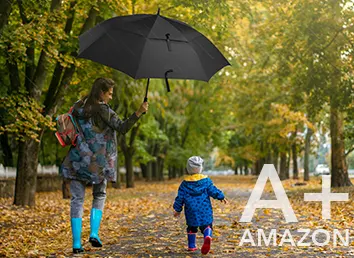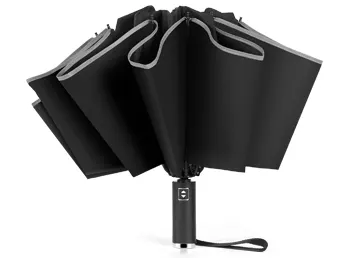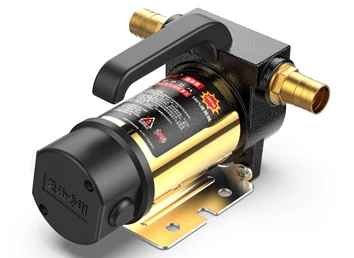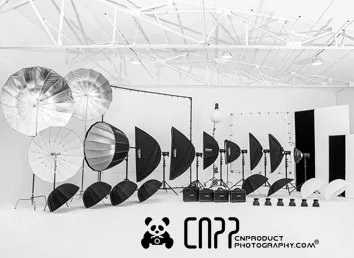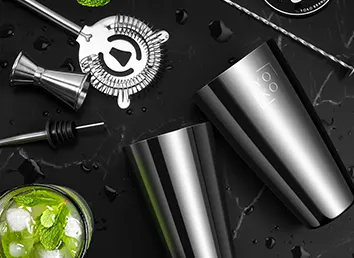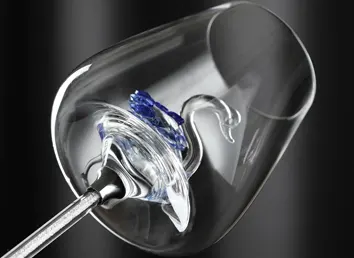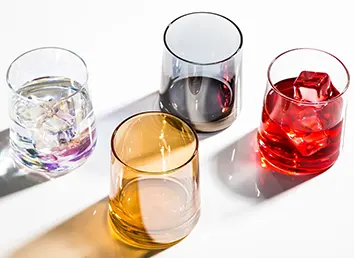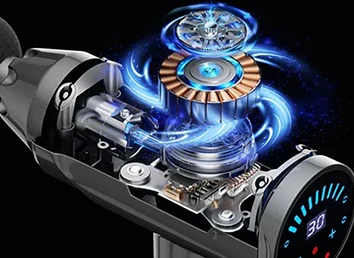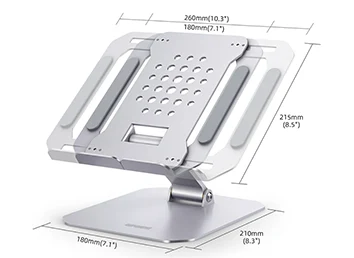The Ultimate Guide to Amazon Product Image Requirements
Author: Jeery
Date Created: 2022-10-19 22:04
An Amazon listing cannot succeed unless it has good Amazon product images.
What is Amazon Product Photography?
Amazon product photography is the art of taking pictures that communicate to potential customers why they should buy your product. This type of photography differs from traditional product photography because it focuses more on the features and benefits of the product while maintaining an attractive appeal.
The goal should be to inform and convince your potential customers.
How do Amazon product images affect conversion rates?
People are visual creatures with short attention spans, so naturally, they are highly influenced by visual stimuli rather than through writing.
It has been proven that listings with better images have a higher conversion rate. According to a survey done by 3M, the human brain can process an image in 13 milliseconds. Assuming that humans process images 60,000 times faster than they process text, this is why having good photography is so important.
If you have attractive photos to explain everything, potential buyers won't go for any other product. Why do they need them? If you've communicated the value proposition, the product looks good, and the images have answered all their questions, then there's no need.
Good images don't just increase conversions; if the main image is great, they also increase click-through rates.
How do I complete my Amazon product images?
There are two options when it comes to finding finished listing images.
1. you get a professional studio to do it.
2. you do it yourself.
My recommendation is to find a professional studio to handle your Amazon product images. They make sure that the product images are professional and ready to showcase your products in the best possible way. The bottom line is that Amazon has many product image requirements that you must follow, and it is easy to miss certain requirements.
But like I said before, this is, after all, the ultimate guide! Of course, we will still cover how to actually take the photos. I didn't mean to scare you before; you can definitely take high-quality images yourself. The key here is to understand what is being done so you can execute it.
Types of Amazon product images.
The type of images you should get depends on the product
Every image plan should have three types of images: main image, infographic image, and lifestyle image.
Main image
The main image is arguably the most important part of the entire listing (besides the product itself). This is the main photo of your product against a white background. It should show exactly how your product will look if the customer is using it out of the box.
Example of the main image.
Infographic image
Infographic images, or simply infographics, are images that showcase the benefits of your product and contain text. These images highlight all of your best features and what makes your product the best it can be.
Infographic examples.
Lifestyle images
Lifestyle images are designed to showcase your products. Since potential buyers can't have the product in front of them, these images can help them imagine what it would be like to use the product.
Example of a lifestyle image.
Now you know what types of images are available, but how many of each should you take?
Planning Amazon product images: This is how I do it
Figure 1: Main image/hero shot
Figure 2: Photo showing all components included and/or showing measurements
Figure 3: Feature Infographic
Figure 4: Feature Infographic
Figure 5: Feature Infographic
Figure 6: Lifestyle
Figure 7: Lifestyle
Of course, you can mix and match the infographic or lifestyle images you have, but what is not negotiable is the master image. Therefore, always make sure your master image follows the rules.
Some products will benefit more from having more infographic images. Perhaps you have a complex product, such as a pressure valve. Your niche market may be less concerned with seeing an image of someone who is using it and more concerned with what it does and whether it works for their water system.
On the other hand, maybe your product isn't that complex. Maybe it's as simple as jumping rope, and you just want to show all the fun you can have from it.
I recommend adding an image and/or sizing chart that shows all the components to make sure the customer knows exactly what they are getting. If you just place that image instead of replying to a few emails about someone thinking your product will be bigger or smaller than expected, it will save you a lot of trouble.
How to take your own Amazon product images
If you plan on taking your own listing images, make sure you're doing it right. Follow these steps, and you should be in the clear.
Pre-shoot
Technical Requirements
You need to understand that there are some technical requirements that you must follow when it comes to Amazon product photography. First of all, you need to save the image file in TIFF, JPEG, GIF, or PNG format.
It is a good idea to check your camera settings before you start shooting. Try to take photos in RAW mode; it becomes easier to remove blur and edit them later in different photography software. Your photo should be at least 1000 pixels (height or width).
Also, you don't need to add any dashes, spaces, or special characters to the image name. Understand the naming conventions for product images on Amazon, including the product identified (e.g., ASIN, SKU, etc.), followed by a period, and the file extension.
Be aware of size interpretation.
When photographing, make sure your product appears to represent its true size. The last thing you want is for someone to leave a low-star review saying that these images are deceiving the size of the product.
Physical Requirements.
Make sure you have everything you need for a successful shoot. This means having a camera that can take clear pictures. Your main image will also need a white background. Make sure you have lighting or enough natural light. Finally, make sure you have any necessary models, props, or locations ready.
Day of the shoot.
White background.
Your main image needs to be pure white. To do this, a sheet or a piece of poster board with white paper will do the trick.
Lighting.
Lighting is critical to showcasing your product in a positive way (pun intended). The right lighting can make any type of product look great and thus generate more sales.
You can use natural light (i.e., light coming in through a window), but you can control it, and you have to work within a window of time.
I recommend investing in some entry-level lighting so you can get consistency without having to rely on the sun upon.
What you want to do with your lighting is really up to you, but it's a good idea to try different arrangements.
The golden rule to follow is to eliminate all shadows.
Shoot different angles.
Take more pictures than you think you need. It's better to take too many shots than not enough. Shooting at different angles will allow you to go back to all the original images later and choose the best ones.
Remember, we want to make sure your customers understand your product completely. We don't want them to miss a single thing because they didn't shoot from a certain angle.
Place the camera on a stable surface.
Whether you buy a tripod or put your camera on a hard surface, you need clear pictures. The last thing you want is a slight blur from the camera you're holding or the title shot.
Are you done with your Amazon product photoshoot? Now what?
Here are some more things you should do.
But having top-notch photos will only get your listing traction so far. If you're not using Amazon PPC ads to get more exposure for your items, it's one of the most powerful tools available to Amazon sellers, and you can use the software to automatically set up and optimize your ads. Click here to see reviews of the top Amazon PPC software providers.
How do I add a photo to a new product listing?
Click Manage Inventory from the Inventory drop-down menu in Seller Central, then click Add Product in the upper right corner of the page, or click Add Product from the Inventory menu in Seller Central.
Click the Create New Product Listing link and browse your product categories.
Fill in the fields under the Important Information and Quotes tab.
On the Images tab, click Add Image.
Under the Images tab in the pop-up window, click Browse to find the first empty image location.
The main image is the image slot in the upper left corner of this section of the page.
Select an image from your computer and click Open.
Click Save and Done to add your image to the list.
How do I add a photo to an existing product list?
From your dashboard, go to the Inventory drop-down menu and select Manage Inventory.
Click on the Edit drop-down menu for each product on the far right and select Manage Images.
Go to the Images tab and scroll down to the section titled Recommended for your images.
Click on any empty image slot for upload. The main image is the image slot in the upper left corner of this section of the page.
Select an image from your computer and click Open.
Click Save in the bottom right corner of the page to add your image to the list.
Amazon Product Image Requirements Guidelines
Amazon maintains strict guidelines regarding product image requirements. When trying to take images yourself, always make sure you meet its standards. Even if you do your photos professionally, it's always a good idea to review these Amazon product image requirements and double-check to make sure your images are good!
Amazon Product Image Technical Requirements
Product images submitted to Amazon must meet the following Amazon Product Image Technical Requirements
TIFF (.tif/.tiff), JPEG (.jpeg/.jpg), GIF (.gif) and PNG (.png) formats
An image pixel size of at least 1000 or greater in height or width preferred
sRGB or CMYK colors
The pattern file name must contain the product identifier (Amazon ASIN, 13-bit ISBN, EAN, JAN, or UPC) followed by a period and the appropriate file extension (e.g., B000123456.jpg or 0237425673485. tif)
Note: Spaces, dashes, or other characters in the file name will prevent your image from going live.
Amazon.com Product Image Standards
For images named with a product identifier but without a variant code or named with the MAIN variant and displayed as the main image on the product detail page, Amazon maintains the following product image requirements.
The image must be a cover art or professional photo of the product being sold. Drawing or illustration of the product is not allowed.
Images must not contain unexplained or confusing other objects.
Images must be clearly in focus, professionally lit, photographed, or scanned, with realistic colors and smooth edges.
Book, music, and video/DVD images should be cover art and filled with 100% of the image frame. Jewelry boxes, promotional stickers, and cellophane are not allowed.
All other products should be filled with 85% or more of the image frame.
The complete product must be within the frame.
Backgrounds must be solid white (RGB 255,255,255).
Images must not contain additional text, graphics, or illustrations.
Pornographic and offensive material is not allowed.
Other Amazon product image requirements for other view images.
Images must belong or be of the product being sold.
Images must be clearly in focus, professionally lit, photographed, or scanned, with realistic colors and smooth edges.
The use of other products or items to help demonstrate the use or scale of the product is allowed.
Products and props should make up 85% or more of the image frame.
Cropped or close-up images are allowed.
The use of backgrounds and environments is allowed.
Text and presentation graphics are allowed.
Pornographic and offensive material is not allowed.
Amazon Product Images: Conclusion
Whether you are just starting out or have an established product catalog, your photos are the most important aspect of your listing. Investing in quality images will result in higher click-through rates and more conversions for your Amazon products.
The better quality they look, the better your chances of making a sale! This is because images are often the deciding factor in a customer's decision to buy your item or not.
So, before you upload your next batch of listings, take some time to make sure each photo is perfect - high-resolution, and well-lit photos maximize appeal!


